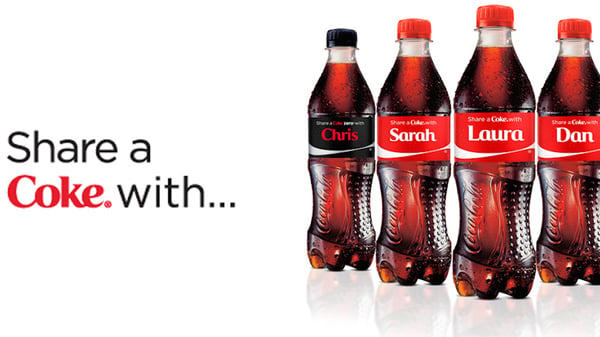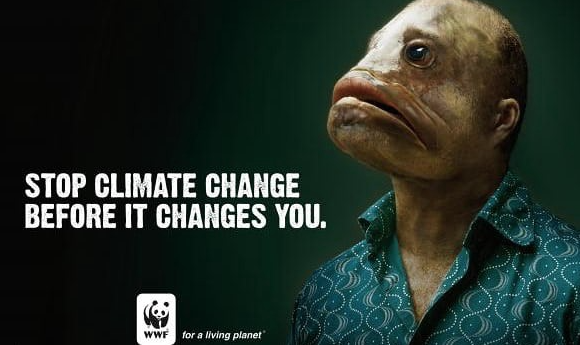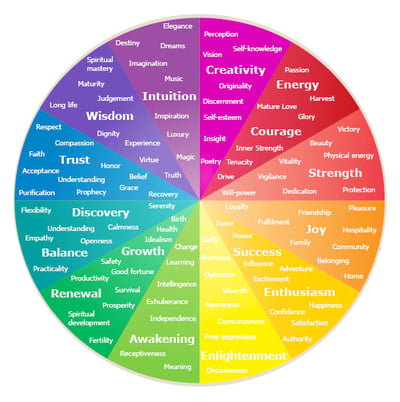Emotional marketing is all around us - from ads on the radio preaching for the best tiles on the market, to the coffee shop you visited this morning. Both situations aimed to appeal to one common thread – your emotions.
Our emotions as human beings are as instinctive as the quick reflexes of a new dad and it’s what has gotten us this far as species. When the early humans encountered a stalking saber-tooth tiger, do you think they just stood there and stared at it waiting to be mauled? Maybe the first person did, but after that it was either fight or flight.
Because emotions are so ingrained into our DNA, we can’t help but to use them for almost every single decision-making moment we are posed with. You may have all the spreadsheets and fully calculated strategies, but it’s a fact that people respond to their feelings first and their logic, second.
As a marketer, appealing to your audience’s emotions is a no-brainer. With the number of media channels, platforms and devices consumers have access or interact with, brands nowadays need better and more effective ways of delivering their message. Standing out from the crowd and having memorable and a fully absorbed message is something emotional marketing can do for your brand.
What is Emotional Marketing? And, Why Does it Work?
Simply put, emotional marketing is marketing to a consumer’s feelings to ultimately incite an emotional response. The point is to tell a story that connects with your audience in a personal way where they could react by feeling any of the four core emotions: happy, sad, scared or angry. Because it's in our nature to initially judge decisions on emotions not logic, this type of marketing is successful because your audience is presented with a reason to attach themselves to your brand. And with strong customer connections comes brand loyalty, as a survey found that 57% of consumers would be more loyal to a brand that’s human.
Also, studies have shown that when people become emotionally fired-up, we have a high tendency to retain this event in our memories. So leaving your audience with an impactful emotional message is a certified way to get them thinking about your brand for longer.
So… How does it work?
If you’ve gone shopping and finally decided to purchase because you’ve justified to yourself that “you deserve it”, then you my friend, have let the emotional part of your brain lead you to buying. Whether it's to build your shoe collection (something I’m very guilty of) or to satisfy your craving for some juicy Pad Thai from your favourite joint, almost everything you buy has some type of emotional connection. Because a brand is nothing more than a mental representation to the consumer, having positive associations about the brand is extremely crucial. This can come from previous encounters, current usage and what they’ve heard from other people. So if your audience can’t connect your brand with positive emotions, then you may have lost touch with the heart of your business and perhaps need to reconsider your marketing campaigns.
Targeting those 4 core emotions mentioned earlier can give your brand an edge with building and strengthening relationships with your audience. Below, I’ve included some successful campaigns that marketed to these emotions to give you an idea of how it looks.
Happiness
As an emotion we crave to experience, being happy ranks pretty high up there. From the hobbies you love to do during the weekends to the values that matter most to you, striving for happiness is undoubtedly something we constantly do. So as marketers, evoking joy in your customers attracts them back to your brand like a magnet.
One of the brands we automatically think of that projects the message of joy is Coca-Cola. In one of their most famous campaigns – “Share A Coke” – the brand released Cokes that labelled peoples names on its packaging.

Despite never finding my name in any of these bottles (sad face), this campaign was a huge hit as it went viral and reached overseas markets. Coca-Cola reported that traffic on its site went up by 870% percent with 76 thousand virtual coke cans shared online in a matter of weeks of its release. All that exposure and engagement with the brand happened because they appealed to our need of feeling connected with others.
Sadness
Empathising with others is something we do when posed with messages that tug on the ol' heart strings. When we feel compassionate about something, this gives us the motivation to act on behalf of others. Think back to an ad you’ve felt closely impacted by. I bet your bottom dollar you can remember it better than any of the billboards you’ve driven past this morning. You may even have acted upon its intended message.
This emotion is what MetLife Hong Kong appealed to for its savings plan for kids. While it's not a long video, the clips mixes in the right amount of elements of sound, voice scripting and characters to get you feeling some type of way.
Anger/Disgust
Invoking disgust doesn’t mean sharing a pic of a moulding sandwich you left under the office drawer to your audience. Instead I mean giving them a wake up call about injustices that exist. Showing that your brand is passionate enough to provoke discomfort in its audience and challenge the norm, signals to people that your brand owns its personal identity and stands for a reason.
Always masterfully targeted this emotion with its iconic ad of #LikeAGirl campaign. Its success came from challenging the meaning of what it means to do things “like a girl”.
Its achievements came in gaining awareness by garnering over 60 million views on YouTube and was tweeted 40 000 times back when it was released in 2014. It's so memorable that here we are, 6 years on still talking about it. Oh, and did I mention it took home an Emmy award?
Fear
When we feel scared, we can feel a little tense and our bodies go into survival mode. This is what prompts us to engage with whatever could keep us and others safe. For brands, being the knight in shining armour when your audience feels out of place is a great way to develop customer loyalty according to a study from the University of British Columbia. To do this, make your audience aware that they’re vulnerable or at risk but always ensure that you have the solution to prevent the harm from happening.
A great example of using the fear factor is the WWF's "Stop Climate Change Before It Changes You Campaign".
The ad is so effective because it uses mutated humans as a warning of the dangers of global warming. The image draws the reader’s attention, while sending a chilling message: “stop climate change now or your descendants could look like this.” This image makes it clear that climate change is something to be afraid of if we don’t take action to reverse it.

Now that we’ve explained the what’s, why’s and the how’s, let me introduce to you some of the ways you can put emotional marketing into effect in your marketing campaigns.
What emotional marketing strategies can I use?
There are multiple ways you can tap into your audience’s emotions in the super-competitive sport of attracting and engaging customers. Below are 4 strategies you can implement as a way of connecting with your audience and having your brand stand out.
1. Understand Your Audience
Because your customers are the heart and soul of your business, attracting and engaging the right audience is a vital step to any marketing campaign. This isn’t something you can achieve without first knowing and understanding who the types of customers are that you want your brand to cater to.
A tried and true method of knowing your target consumer and something we use is the creation of buyer personas. This concept essentially lets you visualise your target customer by creating a semi-fictional character that you and your marketing team can get behind.
When creating your buyer personas, segmenting your audience into different demographics and psychographics can really help in narrowing down the ideal consumer you’re marketing to in your campaign. With these segmenting factors, you’re basically putting yourself in your consumer’s shoes as you get to understand what their pain points are.
By having a deep knowledge of what makes your audience tick, your brand is better equipped to deliver emotional marketing messages that speak to them.
2. Tell a compelling story
This one may have been a given because what good is any story if it doesn't make you feel emotion? Assuming you aren’t a cold and calculating robot, everyone loves a good story and it is in fact a proven way to keep consumers engaged with your content. There’s just something about reading/hearing the journeys of people overcoming trials that gets our ears all perked up.
With that being said, having your brand tell its story can be a very humanising way to get your customers to relate to your message on a more personal level. No customer in their right mind is going to hand their money to a brand that they perceive only as a big money-hungry organisation.
Ensuring that they have something they can empathise with, be inspired by or learn from, doesn’t only harbour your brand’s relationship with that consumer, but also the potential for others’ as readers will be sure to share content that moves them.
3. Create a community
Tapping into emotional marketing to generate a community around your brand is a great way to turn visiting customers into loyal brand fans.
Think of Apple for example. If you look into their product ads, you won't find them focusing on how much RAM the upcoming MacBook pro has from the last. Instead, they focus on convincing you, the reader, that this device will change your life. Some might even say appeal to solving your pain points… *wink, wink*.
Because of this, the brand has created a community of consumers that fully commit to getting themselves decked out in Apple tech and will defend the brand from the Android and PC peeps at all costs.
Due to our innate need of belongingness as according to Maslow, being part of a community gives us a sense of camaraderie and acceptance as we share common ground with people who we may identify to be similar to us.
4. Play with some colour
If you weren’t aware that colour and emotion have been scientifically proven to be linked, then I might’ve just opened your eyes. Appropriately titled Colour Psychology, it entails that specific colours evoke emotions to viewers. Cool colours like purple have been found to stimulate the brain into being creative while warm colours like yellow and orange reveal to arouse appetite.
With so many colours to utilise, each with a different emotion to stimulate, using the right colour palette for your graphics and prints can indicate to your customers how they should feel about your brand. Use the colour psychology wheel below to help you guide what emotions you’d want your audience to feel as part of your inbound marketing campaign.

As a brand wanting to stand out to the eyes of the consumer, appealing to the heart makes your message stick because as people, answering our emotions is what we naturally turn to before all else. With the power of emotional marketing, you are able to make profound relationships with your customers and get them to stick with you for longer. Because as any marketer would agree, that’s our nirvana.


